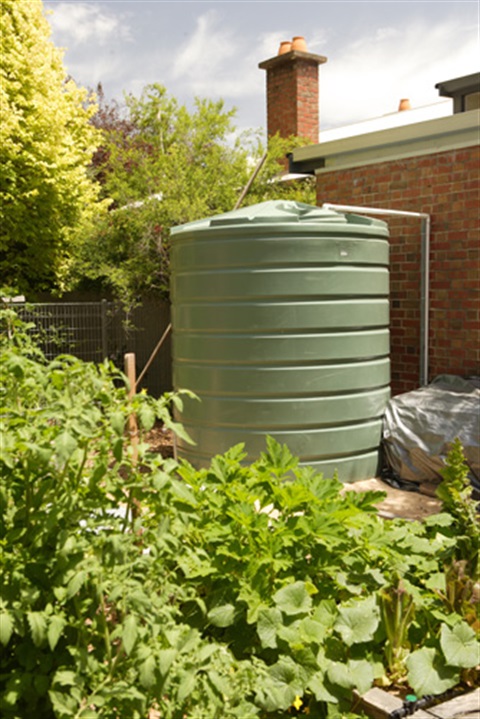Rainwater Tanks

By using and installing a rainwater tank system to supply water for some, or indeed all of your household requirements, you can reduce your dependence on mains water. Our water supplies are dwindling and water restrictions may be in place in many communities to reduce our overall water usage and protect our supplies.
The following rainwater tank fact sheet will provide an overview and introduction to rainwater tank types, rainwater tank systems and tank maintenance.
Rainwater Tank Fact Sheet(PDF, 1MB)
Community Rainwater Tank & Greywater System Information Seminars
The City of Burnside hosted a FREE community rainwater tank and greywater systems information seminar, presented by Sustainable Focus, to address broad community interest.
Rainwater Tank and Greywater Systems Seminar(PDF, 11MB)
What size tank do I need?
From 1 July 2006, new houses and home extensions are required to have not less than 50 m2 of the roof catchment area connected to a 1000 litre rainwater tank that is plumbed to either the hot water service, toilet or all laundry cold water outlets. While 1000 litres is the minimum, installing a larger tank of between 2000-5000 litres will ensure a viable supply of rainwater all year round. More roof area will need to be connected to fill a larger tank.
The following modelling data based on rainfall in the Glen Osmond area will assist you to estimate tank yields with variables including connected roof area (based on 50, 100, 150, 200 square metres of connected roof area), daily consumption, and tank size.
Glen Osmond RWT modelling - 50 sq metres(PDF, 44KB)
Glen Osmond RWT modelling - 100 sq metres(PDF, 44KB)
Glen Osmond RWT modelling - 150 sq metres(PDF, 44KB)
Glen Osmond RWT modelling - 200 sq metres(PDF, 43KB)
Internet resources on rainwater tanks
Guidance on use of rainwater tanks